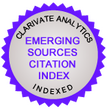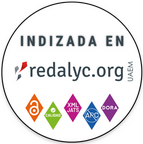WHAT SIZE SHARK DOES THE AQUARIUM NEED? A TEACHING CASE INVOLVING CONFLICT S IN DI STRIBUTI ON CHANNELS
DOI:
https://doi.org/10.13058/raep.2014.v15n1.44Keywords:
distribution channels, channel conflicts, natural fruit juice industryAbstract
This teaching case aims to contribute to understanding distribution channel management and strategic planning. The case is on a fruit juice manufacturing industrial plant with a nationwide presence and covers the beginning of its structuring and production process, commercial launch, marketing strategy development and outstanding preliminary results. Semi-structured interviews with the company’s owners, managers and business partners were employed, along with secondary documentary sources from the company and associations specialized in this type of market. The case focuses on the conflict involving the structure of national
distribution channels comprising four levels: the manufacturer (the company), wholesalers (formed by the company’s sales structure, regional distributors and a national wholesaler), retailers (large hypermarket chains and small and medium retailers) and consumers. Thus, the teaching case encourages students to reflect on the situation, analyze the causes of conflicts, rethink the distribution channels’ structure and seek a solution to the problem. The teaching note assists the teacher in better exploring the various options available to the company’s board of directors, as well as providing conceptual support.
Downloads
Downloads
Published
How to Cite
Issue
Section
License
By publishing a manuscript in the journal Administração: Ensino e Pesquisa (RAEP), the authors declare that the work is of their exclusive authorship and therefore assume full responsibility for its content. The authors grant RAEP a non-exclusive rights license to use the work in the following ways:
(1) Sell and / or distribute the work in hard copies or electronic format.
(2) Distribute parts of the work as a whole to promote the journal through the internet and other digital and printed media.
(3) Record and reproduce the work in any format, including digital media.
Authors and readers are permitted to share the material, use it in classes, for presentations and also for other purposes, and to create new knowledge based on any RAEP publication, as long as the due credit is attributed to the original work and the respective author(s), through citations, references, and other means.
The journal adopts preventive measures to identify plagiarism using software designed for this purpose.
RAEP does not charge authors for the article submission nor for the publishing of approved articles.
In line with the journal's policies, each published article will be given a Creative Commons CC-BY 4.0 license.










